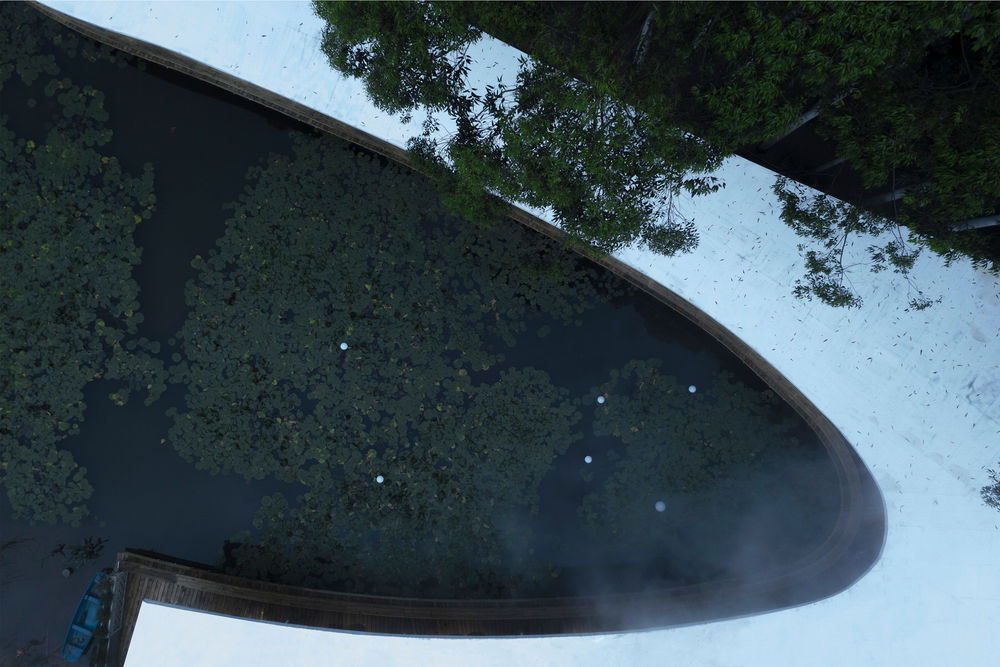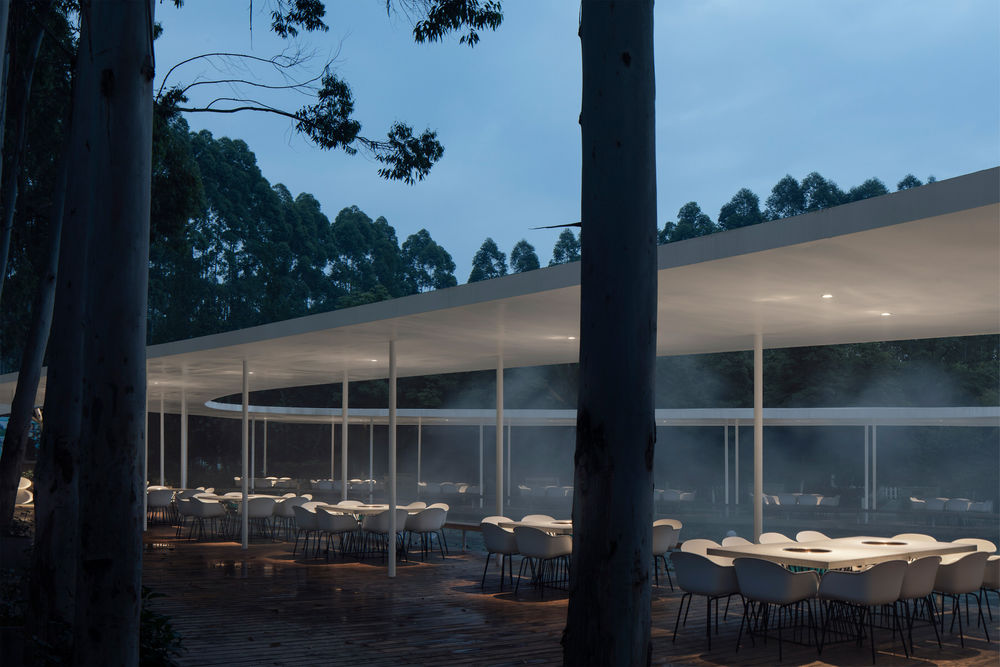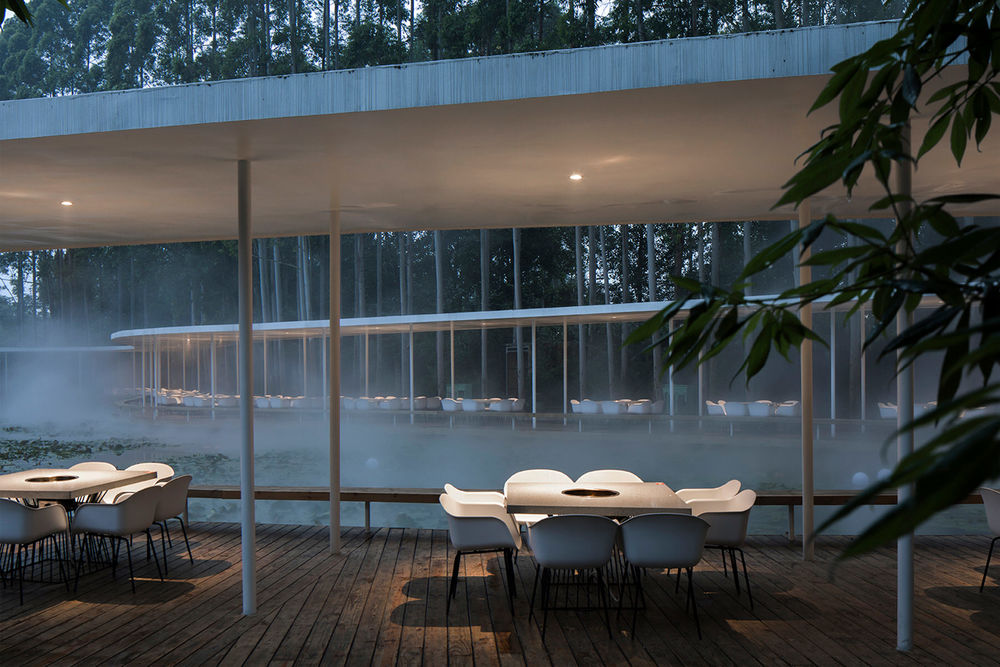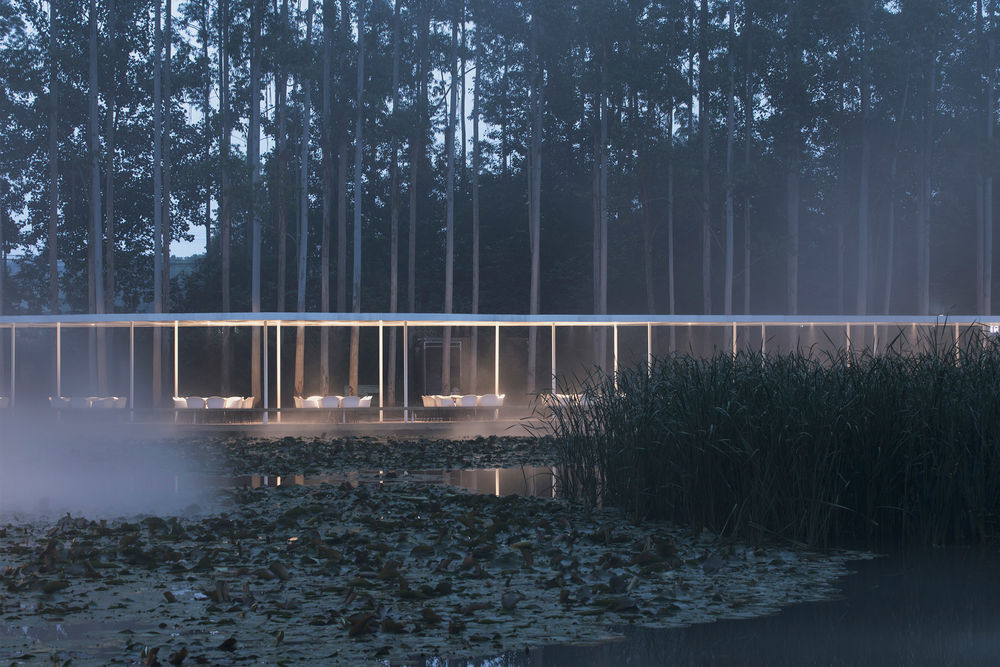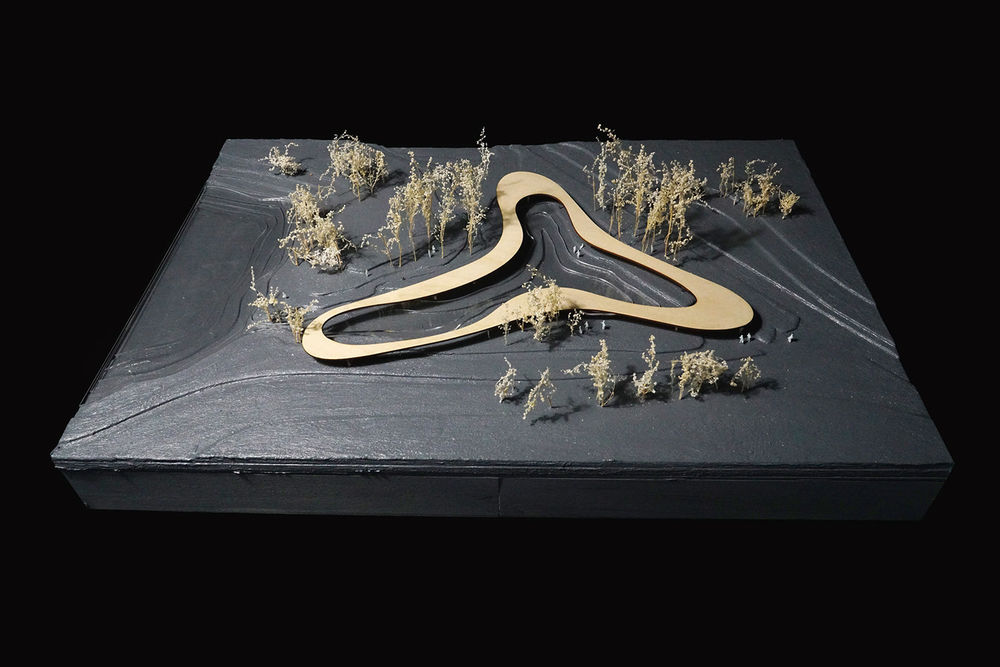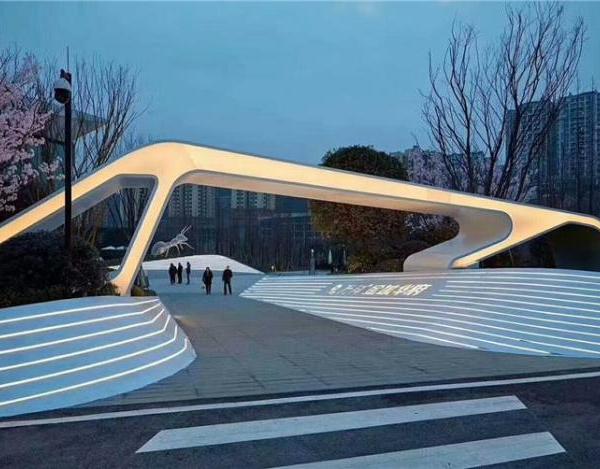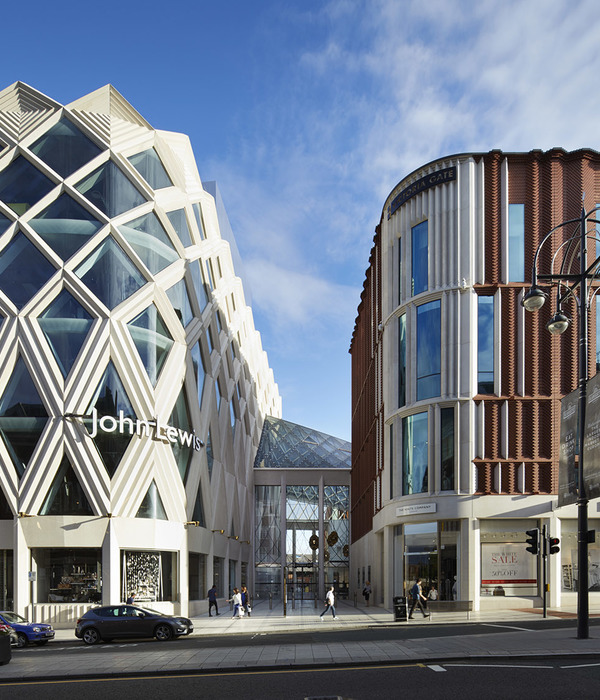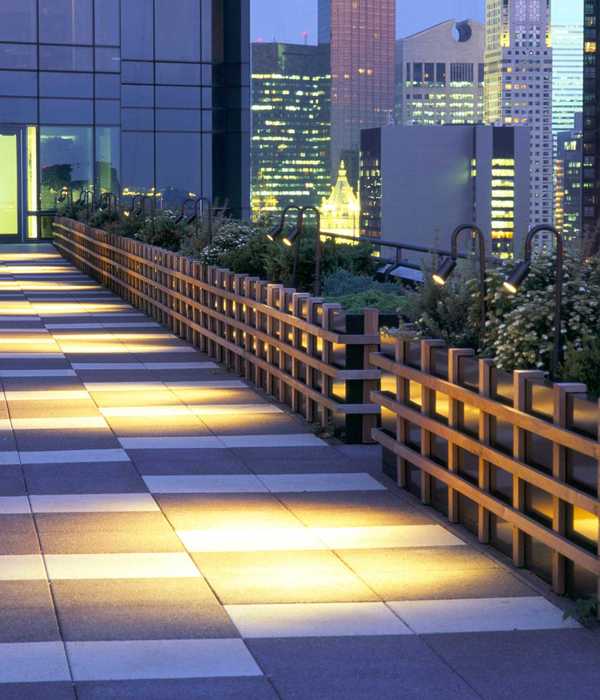Garden Hotpot Restaurant in Chengdu by MUDA Architects.
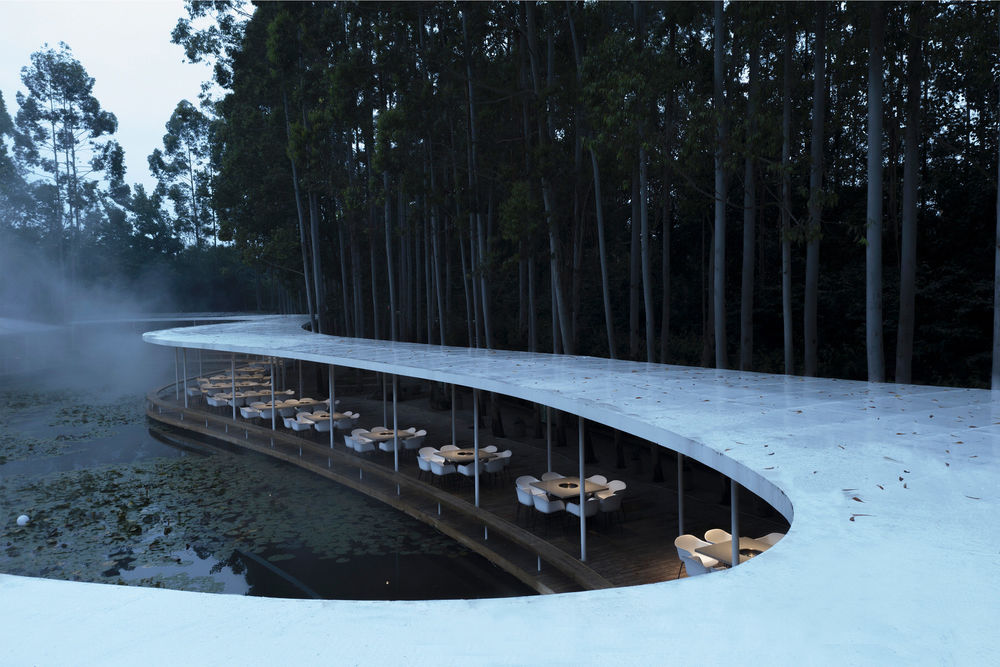

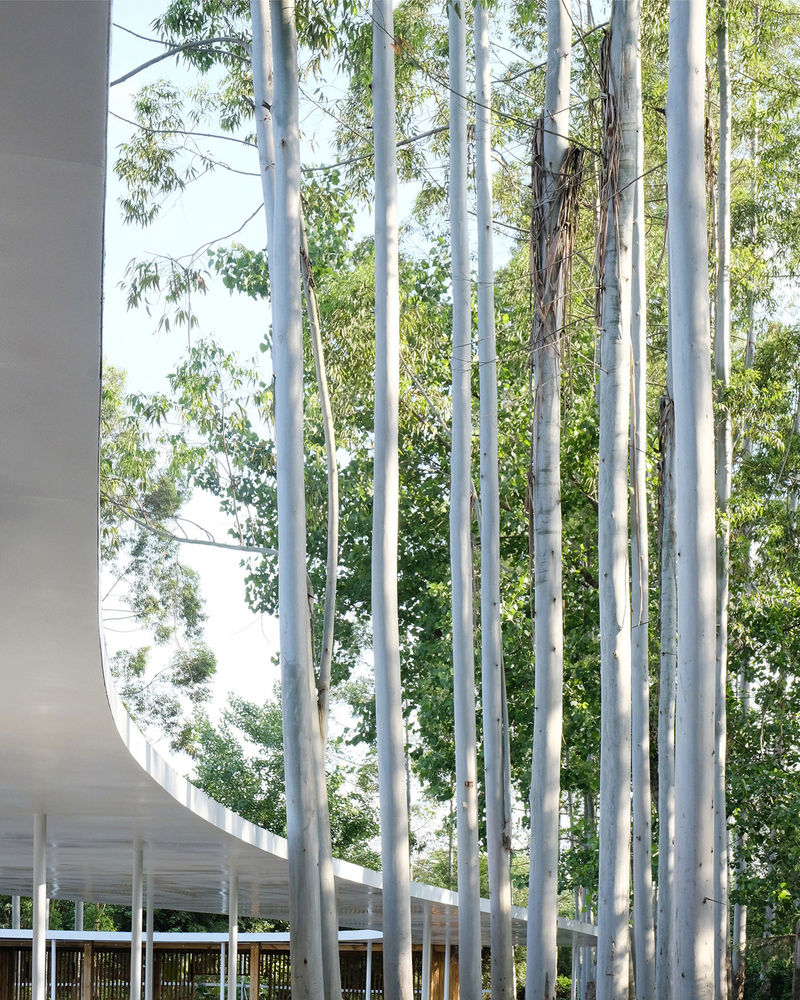
MUDA Architects have integrated hotpot culture with nature, creating a very special restaurant that blurs the boundary between interior and exterior space.
Garden Hotpot in Chengdu sits hidden within a eucalyptus forest and is completely surrounded by a lotus pond. The distinction between the dining table and the surrounding environment has been erased, creating a fully immersive experience for the guests.
When one thinks of a typical restaurant, images of elaborately designed rooms would most likely spring to mind. This project takes things in an entirely different direction, pushing the idea of alfresco dining to the limit.
All usual visual barrier created by exterior walls has been eliminated – instead, a landscape of thin columns holds up the seemingly weightless roof. The result is a seamless relationship between architecture and the environment, as the columns become indistinguishable from the forest of trees that grow around it.
The curving path of the roof subtly references the organic shape of the neighbouring lake, creating a structure that sits harmoniously with the natural world. Architects manually mapped the site’s complex terrain before commencing any design work to ensure the end result preserved as much of the environment as possible. The floor plate becomes a shapeshifter, softly widening and remoulding itself around the existing landscape.
Anti-corrosive wood has been used to construct the platform, while the roof is made from sheets of galvanized steel coated with fluorocarbon paint. The simple material palette allows the structure to gently melt into its surroundings, bringing guests closer to nature.
Related: Stories on Design // Outdoor Rooms.

[Images courtesy of MUDA Architects.]


